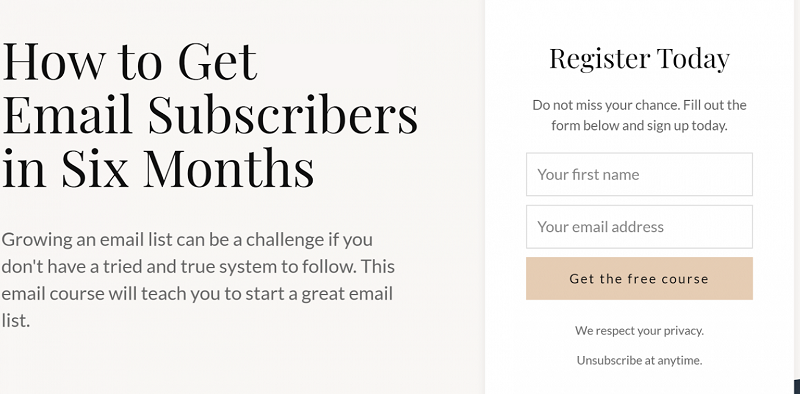How to Create a Landing Page for Lead Generation
Table of Contents
ToggleWe use affiliate links. If you purchase something using one of these links, we may receive compensation or commission.

Introduction to Landing Page
Creating a landing page for lead generation is an essential strategy to grow your email list, nurture prospects, or gather valuable customer data. A well-designed landing page not only attracts attention but also converts visitors into leads effectively. Here’s how you can create a high-converting landing page for lead generation.
Step 1: Define the Goal of Your Landing Page
Before diving into design and content, clarify the purpose of your landing page. Ask yourself:
- What action do you want visitors to take?
- What type of information do you want to collect?
For lead generation, the primary goal is to collect user information—like email addresses or phone numbers—through an opt-in form. This can be achieved by offering something valuable, such as:
- A free eBook or guide
- A webinar or course registration
- A discount code or coupon
- A free trial or demo
Step 2: Understand Your Target Audience
Knowing your audience is crucial. Identify:
- Pain Points: What problems do they need to solve?
- Motivations: What would entice them to share their contact information?
- Demographics: Age, occupation, and other relevant details to tailor the messaging.
The more specific you are, the better you can align your landing page content with their needs.
Step 3: Choose a Landing Page Builder
You don’t need advanced coding skills to create an effective page. Tools like
- Leadpages,
- Unbounce,
- Elementor (WordPress),
- ClickFunnels
offer user-friendly drag-and-drop builders. These platforms also provide templates optimized for lead generation, saving you time.
Step 4: Design the Layout for Maximum Conversion
An effective layout is clean, visually appealing, and guides visitors toward your call-to-action (CTA). Key design principles include:
- Keep it Simple: Avoid clutter that can distract users from your primary goal.
- Use Visual Hierarchy: Place essential elements like headlines and CTAs above the fold.
- Responsive Design: Ensure the page looks great on all devices, especially mobile.
Step 5: Write Compelling Content for Your Landing Page
The content on your landing page should:
1. Grab Attention with a Headline
Your headline is the first thing visitors see. Make it concise, clear, and benefit-focused.
- Example: “Get Your Free Guide to Boost Website Traffic by 200%”
2. Support with a Subheadline
Provide additional context that complements the headline.
- Example: “Learn proven strategies to grow your online presence in just 7 days.”
3. Highlight the Offer
Explain the value of your offer in simple terms. Use bullet points to list benefits:
- What they’ll gain (e.g., actionable tips, exclusive discounts).
- Why it’s worth their time.
4. Create an Irresistible Call-to-Action (CTA)
The CTA should be:
- Clear and Action-Oriented: Use phrases like “Download Now” or “Sign Up Today.”
- Visually Distinct: Use contrasting colors for the button to draw attention.
Step 6: Include Key Elements for Trust and Credibility
Building trust is essential for convincing visitors to share their information. Add:
- Testimonials: Positive feedback from satisfied users.
- Trust Badges: Secure payment seals or privacy assurance.
- Social Proof: Display how many people have already signed up.
Step 7: Optimize the Lead Capture Form
The lead capture form is the heart of your landing page. To increase form submissions:
- Keep It Short: Ask for minimal information—just name and email, if possible.
- Add a Privacy Statement: Reassure users their data will be kept safe.
- Use Inline Validation: Provide immediate feedback to users filling out the form.
Step 8: Test and Optimize
Once your landing page is live, use analytics to measure its performance and make improvements:
- A/B Testing: Experiment with different headlines, CTAs, and designs to see what works best.
- Track Metrics: Monitor bounce rate, conversion rate, and time spent on the page.
- Heatmaps: Tools like Hotjar can show where users are clicking or losing interest.
Step 9: Drive Traffic to Your Landing Page
Creating the landing page is just the first step. Drive targeted traffic through:
- Paid Ads: Use Google Ads, Facebook Ads, or LinkedIn campaigns.
- Social Media: Promote your landing page on platforms where your audience is active.
- Email Campaigns: Send it to your existing email list to capture additional leads.
- SEO: Optimize your page with relevant keywords to attract organic traffic.
Conclusion
A well-crafted landing page for lead generation is a powerful tool to grow your business. By focusing on clear goals, user-centric design, and valuable content, you can effectively convert visitors into leads. Remember to continually test and refine your landing page to maximize its performance. With the right approach, your landing pages will become a reliable source of high-quality leads.


